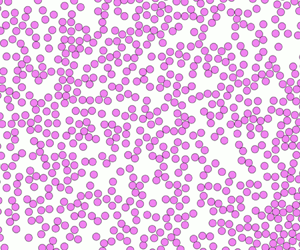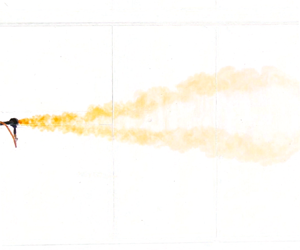Refine listing
Actions for selected content:
1419104 results in Open Access
Elizabeth A. Foster. African Catholic: Decolonization and the Transformation of the Church. Boston: Harvard University Press, 2019. 369 pp. Photos. Maps. Tables. Bibliography. Index. $49.00. Cloth. ISBN: 9780674987661.
-
- Journal:
- African Studies Review / Volume 67 / Issue 2 / June 2024
- Published online by Cambridge University Press:
- 29 February 2024, pp. 477-479
-
- Article
-
- You have access
- HTML
- Export citation
Investigation of near-wall particle statistics in CFD-DEM simulations of dense fluidised beds and derivation of an Eulerian particle dynamic wall boundary condition
-
- Journal:
- Journal of Fluid Mechanics / Volume 982 / 10 March 2024
- Published online by Cambridge University Press:
- 29 February 2024, A2
-
- Article
- Export citation
A NOTE ON PROJECTIONS IN ÉTALE GROUPOID ALGEBRAS AND DIAGONAL-PRESERVING HOMOMORPHISMS
- Part of
-
- Journal:
- Bulletin of the Australian Mathematical Society / Volume 110 / Issue 3 / December 2024
- Published online by Cambridge University Press:
- 29 February 2024, pp. 508-513
- Print publication:
- December 2024
-
- Article
- Export citation
Growing trends in conceptualizing geriatric mental health within a neural context: Commentary on “Anxiety in Late-Life Depression: Associations with Brain Volume, Amyloid Beta, White Matter Lesions, Cognition, and Functional Ability” by Kryza-Lacombe et al.
-
- Journal:
- International Psychogeriatrics / Volume 36 / Issue 11 / November 2024
- Published online by Cambridge University Press:
- 29 February 2024, pp. 991-994
-
- Article
- Export citation
The dynamics of impinging plumes from a moving source
-
- Journal:
- Journal of Fluid Mechanics / Volume 982 / 10 March 2024
- Published online by Cambridge University Press:
- 29 February 2024, A6
-
- Article
-
- You have access
- Open access
- HTML
- Export citation
Hausdorff operators on some classical spaces of analytic functions
- Part of
-
- Journal:
- Canadian Mathematical Bulletin / Volume 67 / Issue 3 / September 2024
- Published online by Cambridge University Press:
- 29 February 2024, pp. 768-780
- Print publication:
- September 2024
-
- Article
- Export citation
Unionization, industry concentration, and economic growth
-
- Journal:
- Macroeconomic Dynamics / Volume 29 / 2025
- Published online by Cambridge University Press:
- 29 February 2024, e3
-
- Article
- Export citation
Judge Ideology and Opportunistic Insider Trading
-
- Journal:
- Journal of Financial and Quantitative Analysis / Volume 60 / Issue 4 / June 2025
- Published online by Cambridge University Press:
- 29 February 2024, pp. 1656-1685
- Print publication:
- June 2025
-
- Article
-
- You have access
- Open access
- Export citation
Edward Stourton, Sunday: A History of Religious Affairs through 50 Years of Conversations and Controversies, SPCK/BBC 2023.
-
- Journal:
- Journal of Anglican Studies / Volume 23 / Issue 1 / May 2025
- Published online by Cambridge University Press:
- 29 February 2024, pp. 250-251
-
- Article
- Export citation
Economic hardship and adolescent behavioral outcomes: Within- and between-family associations – CORRIGENDUM
-
- Journal:
- Development and Psychopathology / Volume 37 / Issue 1 / February 2025
- Published online by Cambridge University Press:
- 29 February 2024, p. 541
-
- Article
-
- You have access
- Open access
- HTML
- Export citation
ARROW’S THEOREM, ULTRAFILTERS, AND REVERSE MATHEMATICS
- Part of
-
- Journal:
- The Review of Symbolic Logic / Volume 18 / Issue 2 / June 2025
- Published online by Cambridge University Press:
- 29 February 2024, pp. 439-462
- Print publication:
- June 2025
-
- Article
-
- You have access
- Open access
- HTML
- Export citation
Thomas Aquinas on Non-Theological Faith
-
- Journal:
- New Blackfriars / Volume 105 / Issue 5 / September 2024
- Published online by Cambridge University Press:
- 29 February 2024, pp. 478-491
- Print publication:
- September 2024
-
- Article
-
- You have access
- Open access
- HTML
- Export citation
A simple prediction of time-mean and wave orbital velocities in submerged canopy
-
- Journal:
- Journal of Fluid Mechanics / Volume 982 / 10 March 2024
- Published online by Cambridge University Press:
- 29 February 2024, A3
-
- Article
- Export citation
Eldercare Issues in China and India Longtao He and Jagriti Gangopadhyay (eds), Routledge, London, 2022, 250 pp., hbk £104.00, ISBN 13: 9781032183794
-
- Journal:
- Ageing & Society / Volume 44 / Issue 9 / September 2024
- Published online by Cambridge University Press:
- 28 February 2024, pp. 2135-2136
- Print publication:
- September 2024
-
- Article
- Export citation
Low-Temperature Acid Weathering in Newhaven, Sussex, United Kingdom, and Its Application to Theoretical Modeling in Radioactive Waste-Disposal Sites
-
- Journal:
- Clays and Clay Minerals / Volume 48 / Issue 2 / April 2000
- Published online by Cambridge University Press:
- 28 February 2024, pp. 238-245
-
- Article
- Export citation
Iron Oxide-Clay Mineral Association in Brazilian Oxisols: A Magnetic Separation Study
-
- Journal:
- Clays and Clay Minerals / Volume 40 / Issue 2 / April 1992
- Published online by Cambridge University Press:
- 28 February 2024, pp. 175-179
-
- Article
- Export citation
Experimental Determination of the Rates of Precipitation of Authigenic Illite and Kaolinite in the Presence of Aqueous Oxalate and Comparison to the K/Ar Ages of Authigenic Illite in Reservoir Sandstones
-
- Journal:
- Clays and Clay Minerals / Volume 41 / Issue 2 / April 1993
- Published online by Cambridge University Press:
- 28 February 2024, pp. 191-208
-
- Article
- Export citation
Low-Charge to High-Charge Beidellite Conversion in a Vertisol from South Italy
-
- Journal:
- Clays and Clay Minerals / Volume 43 / Issue 4 / August 1995
- Published online by Cambridge University Press:
- 28 February 2024, pp. 495-502
-
- Article
- Export citation
Overcrowding in the Dispatching Centre During the COVID-19 Crisis: Are Medical Students a Resource?
-
- Journal:
- Disaster Medicine and Public Health Preparedness / Volume 18 / 2024
- Published online by Cambridge University Press:
- 28 February 2024, e38
-
- Article
- Export citation
Site Occupancy in Nontronite Studied by Acid Dissolution and Mössbauer Spectroscopy
-
- Journal:
- Clays and Clay Minerals / Volume 40 / Issue 1 / February 1992
- Published online by Cambridge University Press:
- 28 February 2024, pp. 1-7
-
- Article
- Export citation




































